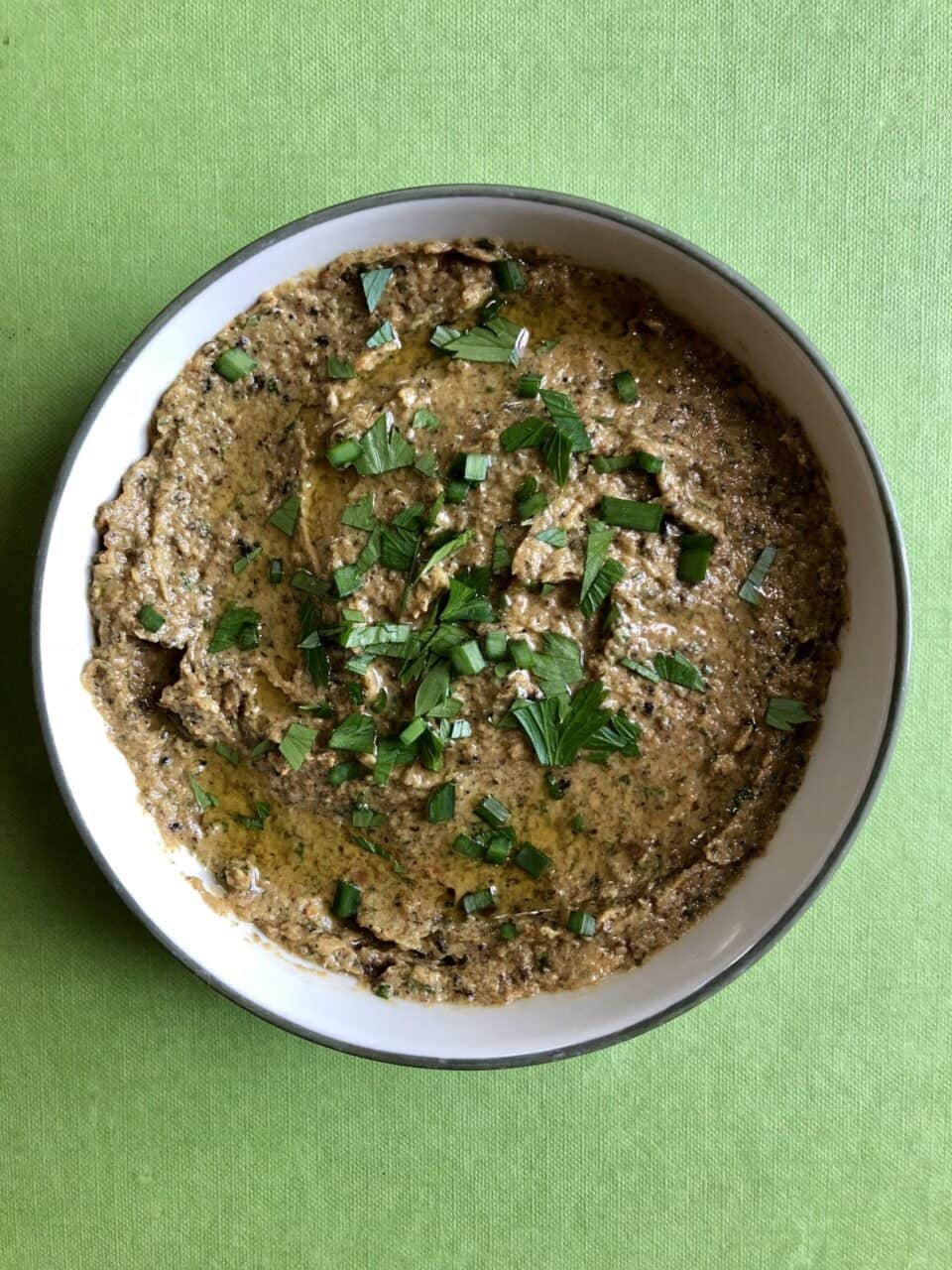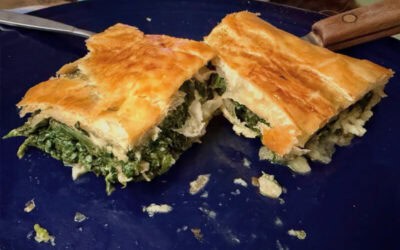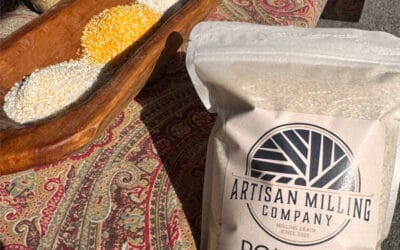Photo by Heather Cross
If you are a vegetarian, eggplant is likely something you are very familiar with. With its substantial texture and ability to soak up flavors, it’s been a vegetarian favorite in many dishes since the 70s. In Middle Eastern and Greek cuisine it’s also a classic, though it’s just as likely to be served with or alongside meats, especially lamb.
Eggplant soaks up flavors, but also olive oil or other fats. This became taboo in the fat-free 90s, but fat can give it such a creamy and luscious texture, such as in eggplant parmesan. Yum! You do not have to fry eggplant to have good flavor or texture, though. Roasting is easier, and always gluten-free (though if you can eat a good breaded eggplant I highly recommend it!).
If you have a pile of eggplant from your CSA box, an impulse purchase at market (eggplant can be SO pretty), or your own frost-bitten garden, you can roast now, freeze, and purée later. Spread your roasted eggplant on a cookie sheet in a single layer, freeze, then pack in bags. Or just throw it all in a bag together; just be prepared to thaw it all at once as well.
Eggplant has a bad reputation with some, while some love it, and some are indifferent to it. A member of the nightshade family, along with tomatoes, potatoes, and peppers, eggplant grows well in Chattanooga’s summers. My personal experience with eggplants is that they still seem to be at peak production at the end of the summer and well into fall, not the beginning of summer.
Looking on the blog, there are only 2 posts that include eggplant as an ingredient! One is a to various end of summer recipes, the other for Greek Eggplant, Two Ways. It’s time for another eggplant recipe!
Baba Ganouj (or ganoush/ghanoush and probably more spellings) is a pretty simple way to use eggplant. You roast it, then throw it together with tahini, olive oil, and garlic and give it a whirl with the food processor or immersion blender. It’s like hummus, but with eggplant instead of chickpeas.
The only thing easier than baba ganouj is eating roasted eggplant straight. Which you can and should do, with your fingers, on pizza, or with other roasted veggies.
Some recipes say that smoking or grilling is a requirement for genuine baba ganouj. We’ve never owned a grill and have always roasted it. This batch Jeffrey tried including smoked paprika and that took it to the same sort of level as grilling it. He started with a small amount and was glad, and kept it to that. Apparently a little goes a long way, heads up.
Other options for the smoky flavor are liquid smoke or smoked salt. We haven’t worked with either one but they are pretty readily available and instructions found online for amounts. Start small; you can always add more, but taking it away is not so easy!
Parsley is the traditional herb in baba ganouj, but cilantro makes sense, too, and is finally available again at market now that the weather has cooled off. Jeffrey went with half parsley and half cilantro, but add your preference to taste and availability. Chives are not traditional, but garlic is, so garlic chives make sense to me, taste-wise, as well. And the green color is so helpful to balance the tan of this dip.
While you’re picking up eggplant at market get some lamb from Harvest Home or Sequatchie Cove Farm, and, as available, arugula, cukes, sweet peppers, mint, and parsley and have a full Mediterranean mezze platter. Here’s more about mezze and another example of mezze dishes.
Baba Ganouj
2 medium-large (or 10-12 Japanese) eggplant, peeled
Juice of 1-2 lemons, to taste
3 cloves of garlic (Jeffrey used roasted garlic marinated in olive oil)
2 tablespoons homemade garlic olive oil
¼ cup tahini
½ teaspoon salt
½ teaspoon smoked paprika
Generous handful each of parsley and cilantro
- Slice the eggplant, salt it, and let sweat for 30 minutes.
- Rinse the eggplant, pat it dry, brush with olive oil, and roast at 425° F for approximately 15-20 minutes until brown and slightly charred.
- Combine eggplant and remaining ingredients in a food processor or in a bowl with an immersion blender. Start with fewer seasonings and add more as necessary to taste.
Printable recipe here





0 Comments